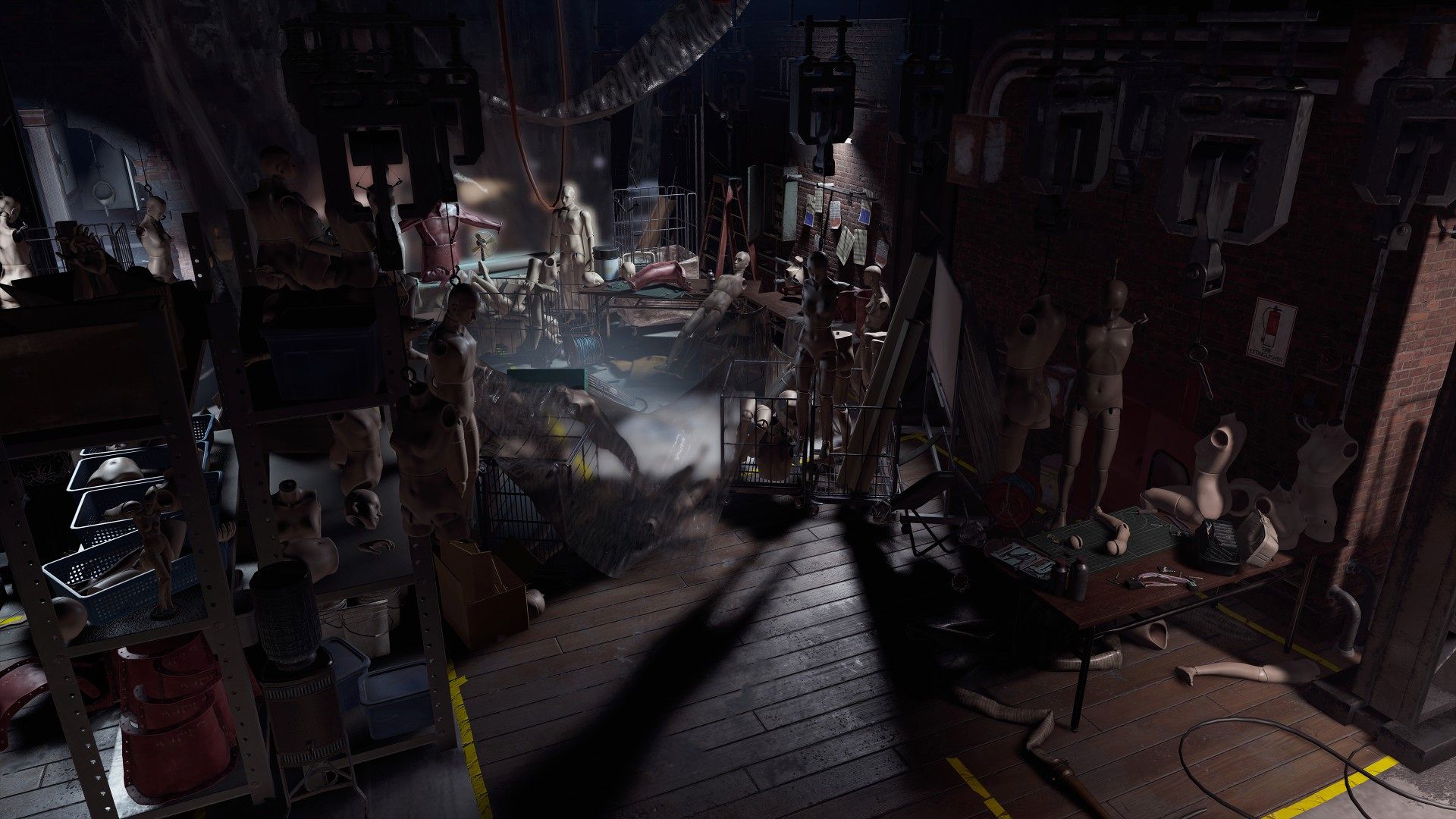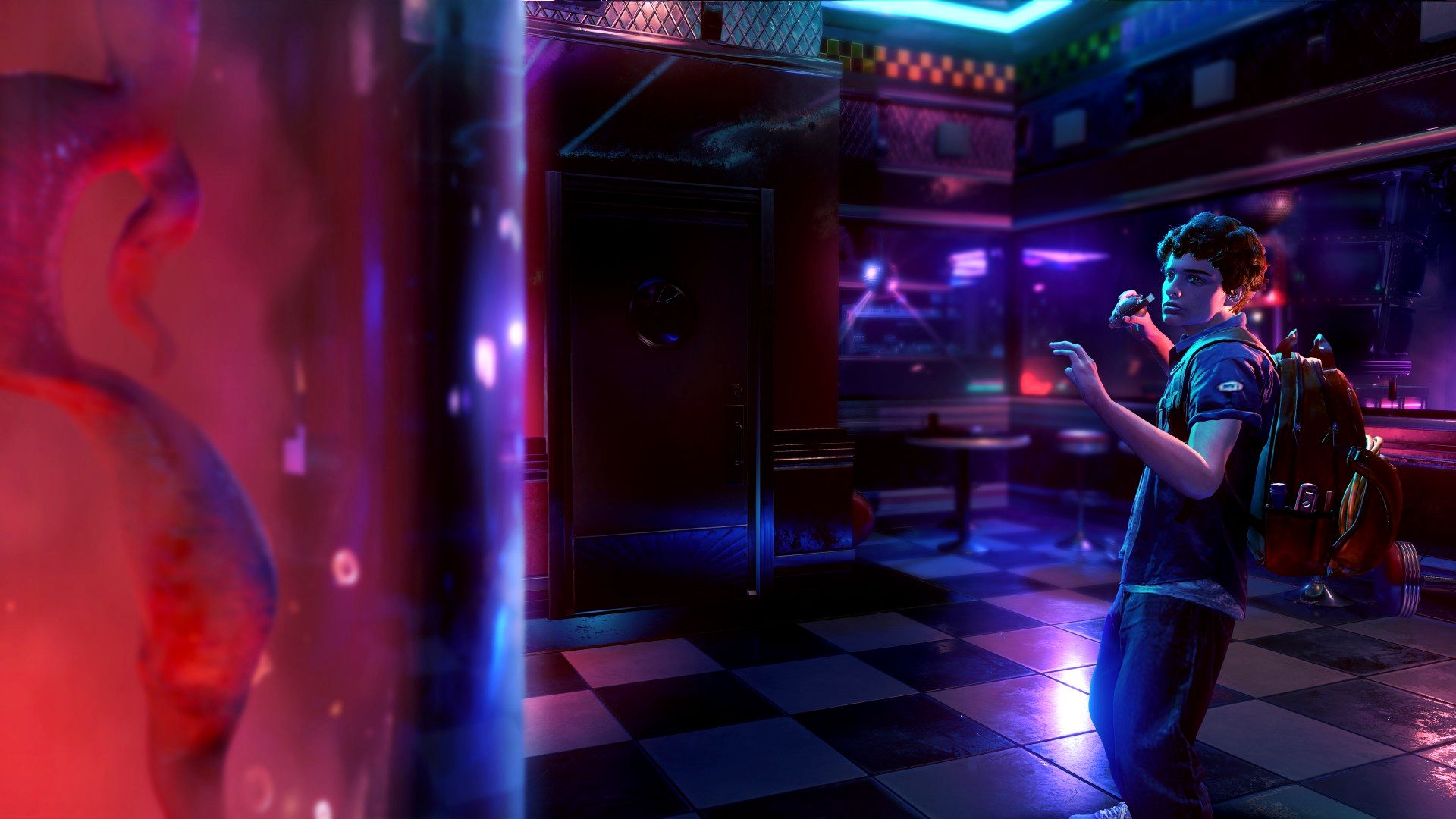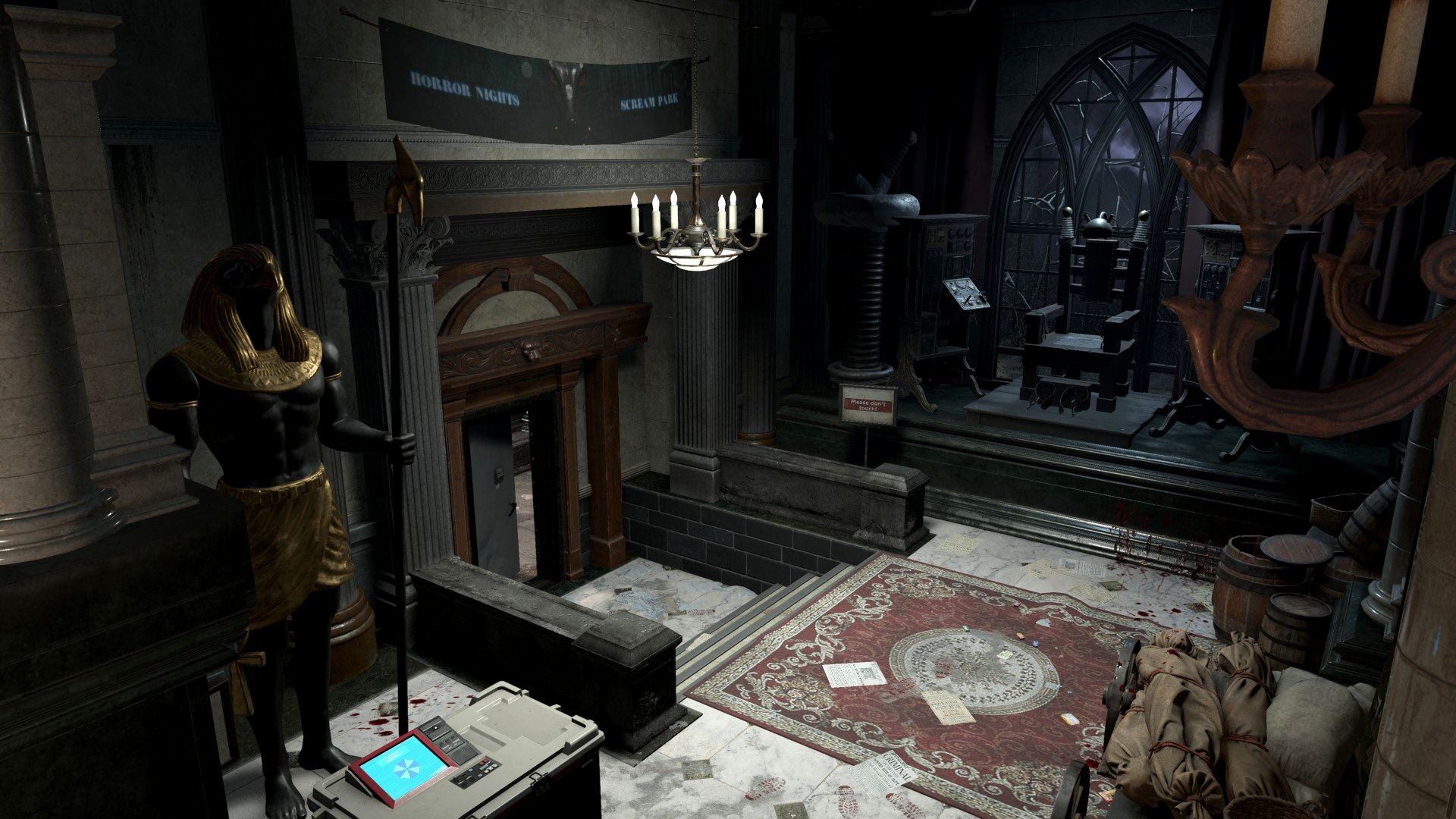The beauty of Resident Evil: Resistance is that it’s unabashedly silly. Resident Evil games have attempted to walk a fine line between camp and serious horror drama for a long time, but inconsistent qualities in game development have caused the series to veer wildly in both directions with varying degrees of effectiveness. Here in Resident Evil: Resistance’s multiplayer, however, the comedy feels intentional, not incidental, without removing (and sometimes even improving) horror elements intrinsic to the Resident Evil franchise.
Asymmetrical multiplayer games have experienced a drastic rise in popularity over the past half decade or so. Titles like Evolve and Friday the 13th gave players the feeling of what it could be like to be an unstoppable monster attacking real human enemies, while also giving those human players a deadly opponent who had the ability to come up with new plans and strategies in a far more creative way than AI enemies ever would. Resident Evil: Resistance takes things one step further, putting one of the five players in the role of not only the monsters, but also the director of everyone else’s chaos.
What is the Umbrella Corporation’s ultimate goal? That’s the question lurking underneath the surface of not only Resident Evil: Resistance, but every game and movie in the Resident Evil franchise. Capcom has tried to explain multiple times in the past, through lengthy dialog-heavy cutscenes and even lengthier text logs, that Umbrella is creating zombies so they can then create and sell cures for zombies, and also to use as weapons, and also to sell to foreign governments, but additionally they are also researching bio-weapons and occult practices for other, more insidious ulterior motives. In Resident Evil: Resistance, players can finally see how fun that nonsense actually is.

There are two sides in Resident Evil: Resistance, the Survivors and the Mastermind, each with their own goals and abilities. There are four Survivors in each gameplay session, every one of them representing a type of stereotypical horror movie character, and their goal is to reach the end of three different areas while avoiding traps and monsters placed in their way by the one Mastermind.
For the survivors, the main gameplay loop quite similar to Resident Evil 3, where the minute-to-minute action consists of simply searching for items which help player progression while shooting at and dodging attacks from zombies and other forms of monsters. Survivors must collect three types of keys in the first area, locate and obtain a security keycard to disable three computer terminals in the second, and destroy three cylinders called “Bio-Cores” in the third. Successfully accomplishing these three goals will open up the door to the final exit, and completing all these tasks is the only way for the Survivors to win a match.
For the one player taking on the role of the game’s Mastermind, controls and gameplay are much, much different. Resident Evil: Resistance’s Mastermind views the available area from a series of security cameras in fixed locations, and through these lenses they are able to not only control elements of the environment (such as turning off the lights in a room or locking the door behind unsuspecting players) but can also place various enemies and traps throughout the map to impede the Survivors’ mission. Once enough time has passed, the Mastermind can even summon powerful creatures from Resident Evil canon like William Birkin or Mr. X from Resident Evil 2 and utilize their decidedly overpowered tendencies to wreck havoc on unsuspecting players.

It depends on which type of playstyle someone enjoys more as to which of these modes is ultimately more fun, but it’s hard to argue for the side of the Survivors when Resident Evil: Resistance lets Mastermind players run around as William Birkin or hide in plain sight as a giant invisible plant monster. Mastermind players can also jump into the body of any available zombie in sight, directing their actions to claw and grab players personally rather than letting the AI take care of everything. At a glance, it seems like the Mastermind in Resident Evil: Resistance is extremely overpowered when compared to the Survivors, even though they are outnumbered four-to-one, but there are a couple of deeply important reasons why this isn’t quite the case.
The first is repetition. Even though the Mastermind has the ability to change where certain key items, enemies, and traps will be placed on whatever multiplayer map the current round is taking place in, there are certain things like room layouts and item location possibilities which remain constant throughout each playthrough. The more familiar a team of Survivors is with the current map, the easier it will be for them to find the necessary items to proceed, and the Mastermind is fairly limited on how creative they can get with pre-round placement.
The second is the nature of the game’s timing system, which can be both beneficial or detrimental to either side depending on how the current match is going. Survivor players are under a time limit to reach the end of each level, and almost every interaction they have while in the arena will influence the clock in some way. If a player defeats a zombie, they may gain five or ten seconds. If a player is wounded, they will lose time. Completing an objective will add a larger chunk of time to the clock, and, conversely, dying will cause a deduction of thirty seconds. Successfully completing an area with all Survivors intact causes a large time boost up two full minutes, and if it reaches zero (and after a brief overtime section) the Survivors will die.

It’s not just the Survivors’ gameplay which impacts Resident Evil: Resistance‘s clock either, as certain actions and skills performed by the Mastermind carry with them the additional effect of adding an extra few seconds to the in-game timer as well. The combination of all of these mechanics leads to something of a snowball effect, where a game which is going well for the survivors early on tends to continue to go well, whereas an early loss or player death will likely lead to the Survivors’ downfall much quicker than expected.
Resident Evil: Resistance‘s biggest problem is a lack of crossplay, something which every asymmetrical multiplayer game should have it it wants to maintain a server full of players. Although the game offers options for choosing to play as Survivors, Masterminds, or Random, only the Survivors and Random (which it seems is also code for Survivors) choices offer the chance to quickly jump in and play the game. Multiple attempts to play the Mastermind side of things saw a “Waiting for players” message which lasted, at the highest end, over thirty-six minutes before a match was found, while choosing to play Random or as the Survivors saw a match beginning almost immediately each time. In a game which offers only two types of gameplay modes, the fact that it takes up to thirty minutes at times to access one of them is infuriating, especially when it’s occasionally really fun.
The engaging, entertaining aspects of Resident Evil: Resistance is what will keep players invested past the ridiculous and unnecessary lootbox system and now-ubiquitous XP Boosters which players can buy for real money. Despite the game’s issues with connecting players properly and a somewhat mismatched balance system, Resident Evil: Resistance is the most fun Capcom has ever let anyone have as a member of the Umbrella Corporation, and series fans who spent a lot of time in last year’s Resident Evil 2 running from Mr. X will likely find a lot of satisfaction in stomping around after players in the tyrant’s over-sized trench coat… if they can find a match, that is.
Resident Evil: Resistance is available on PlayStation 4 and Xbox One. A PS4 code was provided to Screen Rant for the purposes of this review.





